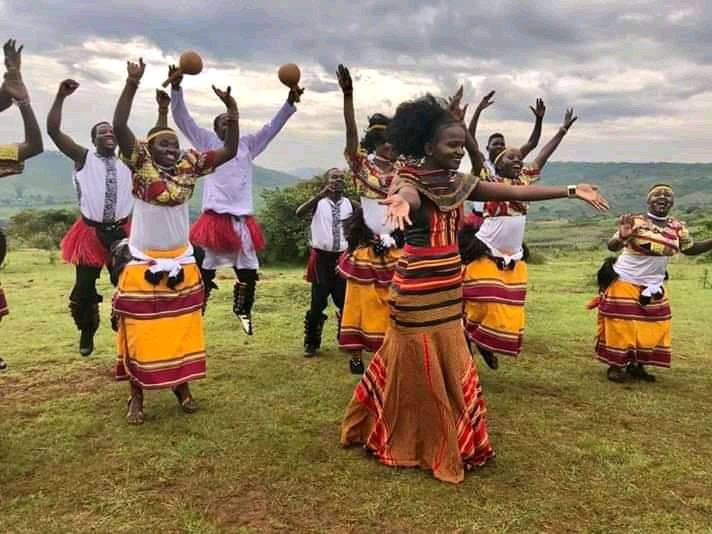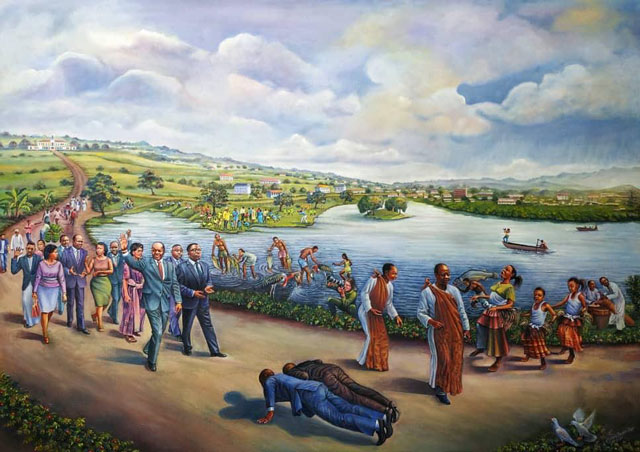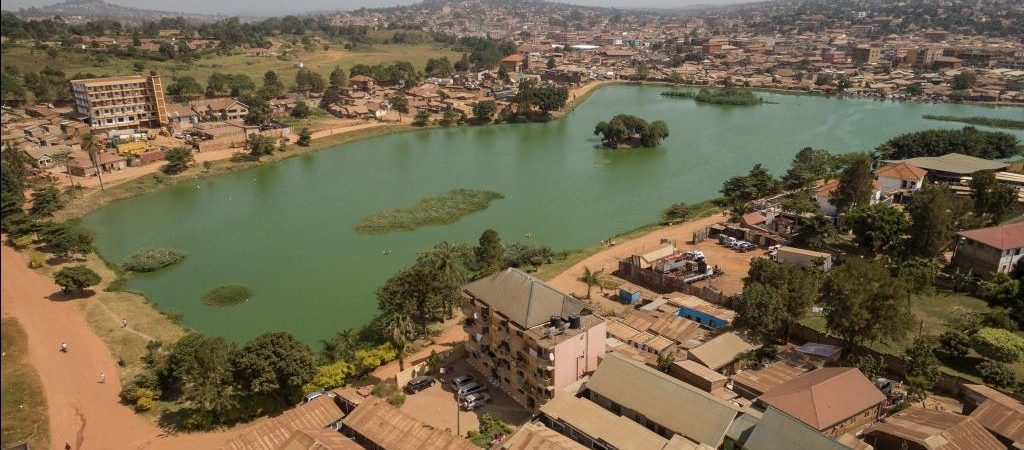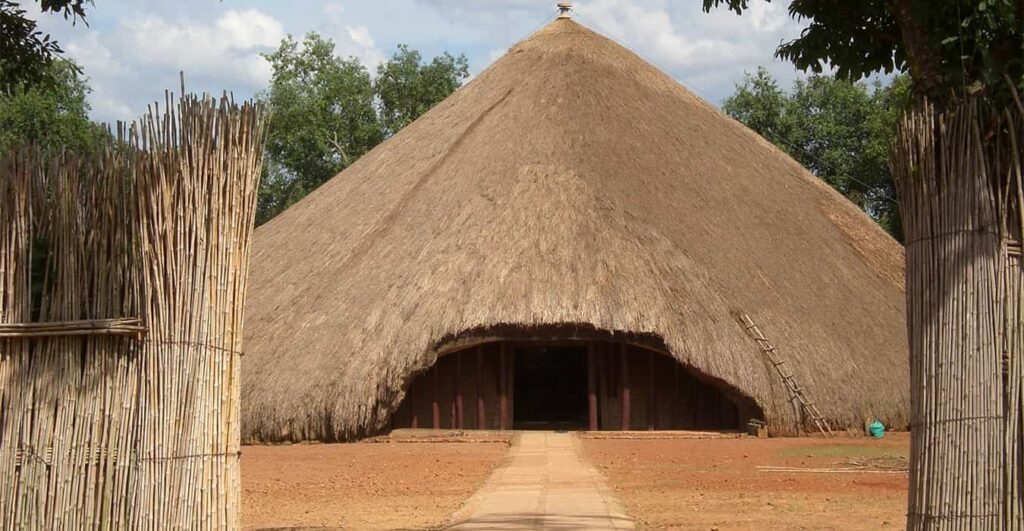The kingdom of Buganda and Buganda Culture

The kingdom of Buganda and Buganda Culture : Buganda is the largest kingdom in the present day Uganda. It is one of the various kingdoms of East Africa that are known to have been very strong during the 19th century. Buganda kingdom encompasses the entire central region of Uganda including its capital Kampala and the south-central area which covers the northern shores of Lake Victoria. The people of Buganda are called “Ganda” (Baganda and Muganda for singular) and their language is “Luganda”. It is one of the widely used local language across the country.
History of Buganda kingdom
The kingdom of Buganda has been known in Uganda’s history since the 14th century during the rule of King Kato Kintu who is said to be the founder of the dynasty. It is one of the kingdoms that for a long time realized a steady progress in growth while preserving culture. By the 19th Century, Buganda had become the largest and most powerful monarch in East Africa. This kingdom still stands among the most powerful in the region up to now.

In the same 19th century, Buganda started receiving Islamic and Christian missionaries who arrived during the reign of Mutesa I. after his death, the kingdom saw a lot of political and religious divisions. In 1894, the British made Buganda part of the British sphere and in 1900, the Buganda agreement (1900 Buganda Agreement) was signed. This made Buganda kingdom the center of the British protectorate government in East Africa where a lot of Ganda people became colonial administrators.
In 1962, Uganda gained its independence and Buganda kingdom was given considerable autonomy. It got a special federal status within the nation. However, because it insisted upon its own political identity, there were conflicts in the central government. A bitter battle between Mutesa II the leader of Buganda and Milton Obote who was the prime minister was experienced in 1966 and in 1967, Obote abolished kingdoms in the country including Buganda.
After the National Resistance Movement under Yoweri Kaguta Museveni had taken over power as president of Uganda, he reinstalled kingdoms in 1993 and Buganda restored. Currently, Buganda is has a very high level of self-government away from the state of the nation. From the time Buganda kingdom restored, the Kabaka (king) has been Muwenda Mutebi II. He is the 36th Kabaka of Buganda and his wife is Nnabagereka Sylvia Nagginda. Nnabagereka is the title for the Queen of Buganda.
Buganda kingdom is strategically located in the center of Uganda. It is bordered by Lake Kyoga to the north, river Nile to the east, Lake Victoria in the south and River Kafu in north east.
The Government of Buganda
The current king of Buganda kingdom is Kabaka Muwenda Mutebi II and the leader of Buganda government is Katikiro Charles Peter Mayiga. Katikiro is a title for the prime minister of Buganda kingdom. He was appointed by the reigning Kabaka of the kingdom in 2013. Buganda has a parliament known as Lukiiko. It consists of directly elected members from Buganda counties, Buganda county chiefs, members appointed by the Kabaka and Buganda cabinet ministers.
Initially, Buganda kingdom was an absolute monarchy under the leadership of the kabaka. There were three categories of the leaders; chiefs who were known as Bakungu or administrative chiefs were appointed by the Kabaka, the traditional Bataka chieftains and the Batangole chiefs who worked as representatives of the king. With this the duties of the Lukiiko as the advisory council to the Kabaka were enhanced.
In 1955, Buganda kingdom changed from absolute monarchy to constitutional monarchy. By 1962 when Uganda got its independence, Buganda kingdom could exercise its own self-government perfectly. There are 52 recognized clans in Buganda and under each of them, about 4 sub-groups trace their historical waves of immigration to the kingdom.
The economic activity of the Ganda
The main economic activity in Buganda kingdom is crop cultivation and cattle keeping. Most of the people of Buganda that owned big farms of livestock hired people from outside Buganda to come and take care of this property. Baganda women did most of the agricultural work while men were mainly occupied with politics and commerce.
The staple food in Buganda kingdom is Matooke. It was grown was the most grown crop in the central and offered an economic base for the dense population in the region.
Tourist attractions in Buganda kingdom
The Buganda Parliament- Bulange
Bulange was constructed during the colonial regime under the rule of Kabaka Muteesa II to act as the Lukiiko of the kingdom. This parliament of Buganda is located opposite the Kabaka’s palace. This was done so that the enemies of Buganda can easily be spotted.
On arrival at this place, the site guide takes you around the Lukiiko Hall, the gardens and the monuments. He also tells you about the history and importance of Bulange.

The Royal Mile
This is a straight road that was constructed to connect the Bulange- Buganda parliament to Kabaka’s palace also known as Twekobe. The Kabaka uses this road to head to the parliament for administrative works and back to the palace. This road is beautifully decorated with ancient architectural designs and they are worth watching, it is one of the areas always included on the itinerary for Kampala city tour.
Kabaka’s Palace- Twekobe
The word Twekobe means “come together in oneness for a cause”. The people of Buganda came together to construct the Kabaka’s palace on Mengo hill, one of the seven hills of Kampala. The palace was established by Kabaka Mwanga II, and this has been the palace for the last 6 kings of Buganda kingdom. It is at this palace that the famous 1900 Buganda agreement was signed. Kabaka’s palace is situated on top of the hill that offers breathtaking views of Kampala city center.
Kabaka’s lake
This is a manmade lake that was constructed under the orders of Kabaka Muteesa II in 1880. It is located in Ndeeba between Nabunya road and Ring road, just about 5km from the city center. Kabaka wanted this lake to act as an escape corridor during the time of the British armed conflicts. Kabaka’s lake is the largest manmade lake in Uganda. It was constructed with an intention of connecting it to Lake Victoria.

Kasubi tombs
Located on Kasubi hill, this place is a UNESCO World Heritage Site and an important place in Buganda kingdom. It is the burial cemetery of the Kabaka’s of Buganda with four of the kings buried in the main shrine. When you get into the shrine, you are showed where they were buried which is known as “a forest”. Close relatives of the kings such as the princes, princesses and wives of former kings are buried here too. There are other shrines which the site guide tells visitors more about them.

Other sites you can request to be added to your itinerary if you want to explore and learn more about Buganda kingdom include Sezibwa falls, Ndere culture center, Wamala tomb, Namasole tomb and Nakayima tree. For travelers seeking a more adventurous tour, destinations like the Uganda Museum, Makerere hill and Bahai’ Temple are spectacular.


